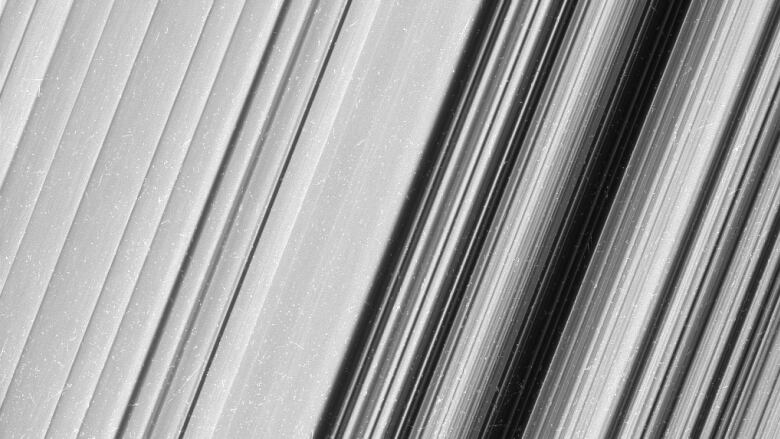Cassini spacecraft captures stunning images of Saturn's rings
Close-up images of the planet's complicated ring system reveal 'propellers' in great detail

New images from NASA's Cassini spacecraft have provided an unprecedented view of Saturn's intricate ring system.
The images were taken as part of the end of Cassini's mission, which will come to a close on April 26, when the spacecraft begins its plungeinto the giant planet.
- Cassini's grand finale: a death dive into Saturn
- Cassini sends 1st images from new orbit around Saturn
Every week, the spacecraft shoots past the outer edges of the rings, composed of millions of tiny particles (and some larger ones).

The new images are able to resolve details of the rings as small as 550 metres, the equivalent of Earth's tallest buildings, the space agency said.
One image shows features on Saturn's A ring (there are several rings around the planet extending in the alphabet to G) known as "propellers."

These propeller-shaped disturbances are believed to be caused by tiny moons called moonlets embedded in the rings.

"These close views represent the opening of an entirely new window onto Saturn's rings, and over the next few months we look forward to even more exciting data as we train our cameras on other parts of the rings closer to the planet," Matthew Tiscareno, a Cassini scientist who planned the new images for the camera team, said in a NASA release.












_(720p).jpg)


 OFFICIAL HD MUSIC VIDEO.jpg)
.jpg)



























































































